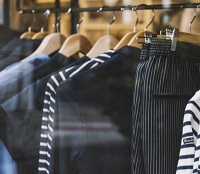FW
The textile ministry recently says total number of PPE coveralls produced in India has crossed 1 crore which is a significant landmark towards the vision of #AatmaNirbharBharat.
According to the government, India has become the world’s second largest manufacturer of personal protective equipment (PPE) body coveralls within a short time span of two months, the government had said last week.
China is the world’s leading producer of PPE body coveralls, crucial to safeguard against COVID-19 infection.
Ludhiana Spinners Association (LSA) and Northern India Textile Mills Association (NITMA) have protested against the issue of anti-dumping duty (ADD) on raw material of acrylic fiber (AF). Senior representatives of both associations met various government officials and ministers in this regard. Just a few months back, they had meet Piyush Goyal, Union Minister of Commerce & Industry, and Ravi Capoor, Secretary Textiles.
Recently in a detailed press release, Northxern India Textile Mills Association (NITMA) claimed large numbers of its workforce, associated with hundreds of units that are producing items made by acrylic fiber, are being affected by the imposition of anti-dumping duty on these fibers.
As per sweater and shawl manufacturers of Ludhiana, the imposition of this duty increases their cost while only three companies of India are in gain due to this policy. Out of these three companies, two themselves are spinners and consume their own fiber. Acrylic fiber is also known as the common man’s wool, and Ludhiana, the leading textile and knitting hub of India, is the main producer of shawls and sweaters in the country.
Due to such policies, countries like China, Vietnam, and Bangladesh are benefitting of India’s lack of competitiveness with their low cost and lesser price. Apart from NITMA, other trade bodies of the Ludhiana such as Knitwear Club, and Knitwear and Apparel Manufacturers Association of Ludhiana (KAMAL) are also in the favour of removing ADD on AF. But no luck so far, and it looks like Ludhiana’s struggle will continue.
 COVID-19 has forced brands across the world to strike a complicated balance between stocking sufficient inventory for future needs and avoiding surplus to cut waste. Most brands in the US could achieve this easily by shifting manufacturing locally. However, fashion brands suffered on account of the high costs and low standards of their production processes. The US does not have high-end manufacturing processes like China does.
COVID-19 has forced brands across the world to strike a complicated balance between stocking sufficient inventory for future needs and avoiding surplus to cut waste. Most brands in the US could achieve this easily by shifting manufacturing locally. However, fashion brands suffered on account of the high costs and low standards of their production processes. The US does not have high-end manufacturing processes like China does.
Secondly, employment in the country’s apparel manufacturing sector declined from 28 per cent to 8 per cent in 2017. Contrary to this, apparel manufacturing in China grew by 5 per cent every year from 2014 to 2019. Also, Chinese factories were able to bring in more than $380 billion in annual revenue.
Shortening lead times
However, the outbreak of COVID-19 has led to many brands questioning their reliance on China and demanding resurgence in American manufacturing which they believe would lead times and require less inventory, thus avoiding big losses during a crisis.
would lead times and require less inventory, thus avoiding big losses during a crisis.
As Kristen Fanarakis, Founder of contemporary brand Senza Tempo points out, manufacturing in the US enables brands to pivot faster. It also reduces manufacturing lead times which can take up to three months in China. This can be seen from the example of Haverhill Leach, founder of jewelry brand Haverhill Collection, who relocated her manufacturing bringing home a giant order of finished components including silver and stones. She assembled and finished these pieces from home and their sales have tripled in the last two months, being able to offer much shorter turnaround times just in time for Mother’s Day.
Need for a robust infrastructure
But to manufacture in America, brands need to have a robust infrastructure like China and Italy. Also, there’s a limit to how much brands can produce in the country. If they want to manufacture on a small scale or are making something simple like T-shirts, they can easily get it made by someone else. However, apparel factories in the country cannot offer the kind of volume or intricacy of product that massive Chinese factories can.
For manufacturing in the US to take off, the government needs to incentivize it. Currently, manufacturing in the country does not receive any cost or tax incentives. The government needs to pay attention to this.
As per Cotton Association of India (CAI) estimates, cotton exports by India are likely to rise by 12 per cent from previous estimate to 4.7 million bales in 2019-20 as a fall in the value of the rupee has made shipments competitive. This could further add pressure on global cotton prices, which are trading near their highest level in more than two months.
Indian could also limit its shipments to rivals such as the United States, Brazil and Australia and divert them to key Asian buyers such as China, Bangladesh and Vietnam. The country sells its cotton at around 62 cents per pound on a cost and freight basis (C&F) to these Asian buyers such as Bangladesh. The country is expected to produce 33 million bales in the marketing year ending September 30, 2020.
In view of the current circumstances, VDMA has postponed international trade fair Texcare International, The fair will now be held from November 27 to December 1, 2021. The trade fair will offer global technology providers from the textile care sector the ideal platform to present their innovations to an international audience and to position themselves together with their customers for the challenges of the future after the COVID-19 crisis.
Texcare International is the international trade fair for the laundry and dry-cleaning sector. Exhibitors and visitors at the trade fair will present their latest machinery, plant, processes and services for laundry and dry-cleaning technology. The exhibition will be the central meeting place for the worldwide textile care sector and by postponing it, the fair can once again live up to its own standards as the leading international technology fair in autumn 2021.
The American Apparel and Footwear Association (AAFA) recently co-signed a letter with more than 130 organizations calling for amendments in the Paycheque Protection Program (PPP). Addressed to several top US government politicians, the letter requests emergency legislative and administrative action to repeal the program's 75 per cent-25 per cent rule, extend the eight-week period for purposes of calculating loan forgiveness and extend the June 30 safe harbor date for rehiring and restoration of pay.
These three modest changes would help ensure that the liquidity provided through the PPP can be deployed in a manner that is most likely to allow a small business to remain operational, the letter said. Specifically, these changes would help small business owners who need capital for overdue rent payments, the re-start of vendor contracts, and other necessary expenses. In addition, the extended deadlines would permit a more orderly return to work consistent with the phased reopening, it added.
AAFA also submitted detailed comments on to the US Customs and Border Protection office and the US treasury department requesting an extension and modification of the duty deferral program.
It suggested including additional months in the deferral program, expand the program to include all duties, modify the hardship test and allow retroactive refunds.
Textile Exchange plans to launch 2020 CFMB survey in June 2020. The survey enables participating companies to measure, manage and integrate a preferred fiber and materials strategy into their business.
Textile Exchange recently released its 2019 Material Change Insights Report, which surfaces valuable insights about the state of fiber and materials sourcing in the textiles sector in the context of the COVID-19 pandemic. The report draws on exclusive data provided through Textile Exchange's Corporate Fiber & Materials Benchmark (CFMB) program, the largest peer-to-peer comparison initiative in the textiles sector with more than 170 voluntary brand participants. The CFMB program fills a necessary industry gap by rigorously analyzing self-reported company data to track the materials sourcing progress of individual companies as well as the industry at large.
The resulting Material Change Insights Report provides one of the most data-backed and comprehensive analyses of how the industry is progressing in its shift to preferred materials, as well as alignment with global efforts like the Sustainable Development Goals (SDGs) and the transition to a circular economy. It builds on Textile Exchange's Material Change Index (MCI) — a family of indices, published earlier in the year, that tracks individual company progress.
The 2019 report was authored by Textile Exchange's Fiber and Materials team, with circularity content developed with global consultancy Corporate Citizenship and support from media partner GreenBiz.
Salvatore Ferragamo, the Florence-based label, which has suffered a 30 per cent decline in sales due to the COVID-19 crisis, has reshuffled its management and reappointed Michele Norsa as its executive deputy chairman. Micaela le Divelec Lemmi will continue in her role as CEO but the Ferragamo family has stepped down from their executive positions.
Norsa has taken over the authority previously held by Ferruccio Ferragamo, who will continue in his role as chairman but has passed on his previous executive powers. Norsa has also assumed the chairmanship of the executive committee, and the brand and product strategy committee.
Ferruccio Ferragamo's son, Giacomo Ferragamo has stepped down as a member of the board in order to make a seat available for Norsa. However, he will continue as a manager with strategic responsibilities, focusing on his role as brand & product and communication director.
Norsa boasts many years of experience in the luxury industry, having notably served as CEO at Valentino. Most recently, he was vice chairman at Missoni.
Ralph Lauren Corp expects its fiscal 2021 results to be significantly hit by the COVID- 19 crisis. As reported by IBES data from Refinitiv, the company recently posted a bigger-than-expected quarterly loss as stores across the world were forced to close due to the Covid-19 pandemic.
The company’s shares, which have fallen over 30 per cent so far this year, fell 2.5 per cent in premarket trading. Its net revenue fell by 15.4 per cent to $1.27 billion in the fourth quarter ended March 28, but was slightly above analysts' average estimate of $1.22 billion.
The company reported a net loss of $249 million, or $3.38 per share compared with a profit of $31.6 million, or 39 cents per share, a year earlier. Excluding certain items, it lost 68 cents per share, while analysts were expecting a loss of 40 cents.
After 28 years on the Hong Kong Stock Exchange, sourcing giant Li & Fung has officially gone private as its shares were delisted from the Hong Kong Stock Exchange (HKSE) after they lost over 94 percent of their value since 2011.
As a privately held company, Li & Fung will be managed by the Fung family and Singapore-headquartered global logistics warehouse operator and investor GLP Pte Ltd. The Fung family will retain a controlling share of the company with 60 percent of the voting shares.
Privatization of the company was prompted in part by Li & Fung’s fall from its perch as the leading middle man facilitating manufacturing and trade between factories in mainland China and brands and consumers around the world. As supply chains developed new demands and the value of the middleman waned, the company struggled to pivot, particularly as online shopping started to step into brick-and-mortar retail’s territory, and its volumes and profits took a hit.
Its focus now will be to create the digital supply chain of the future. The 114-year-old company is poised to put all of its efforts into a transformation that will empower it to deliver on the modern supply chain’s new demands.












